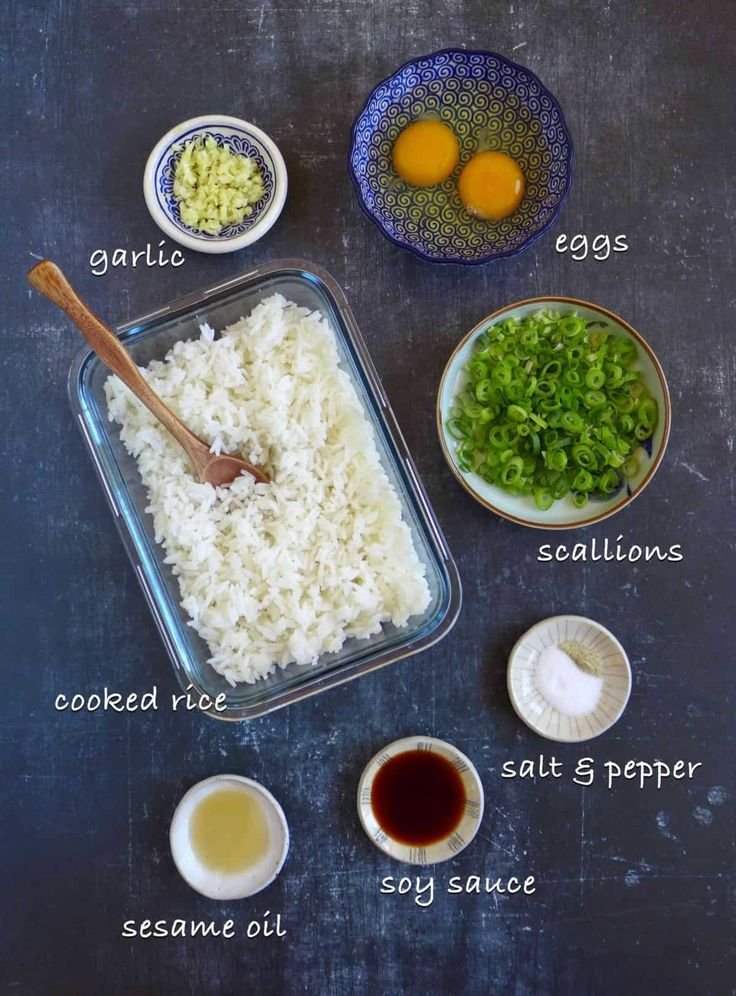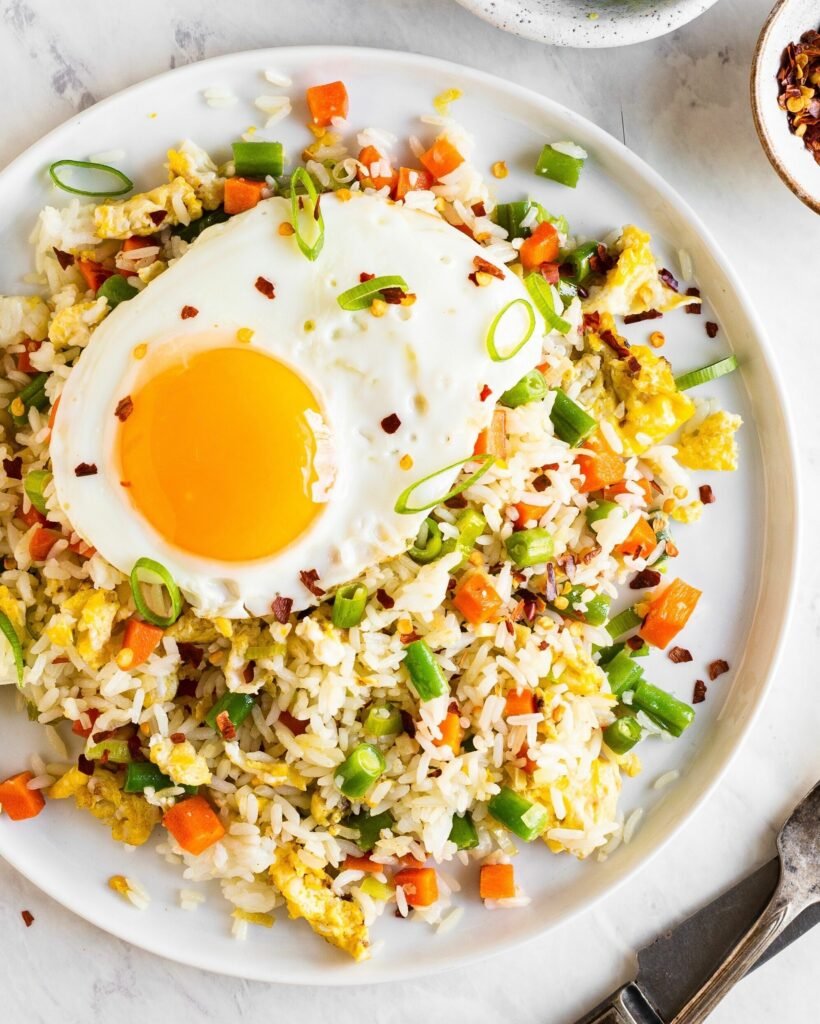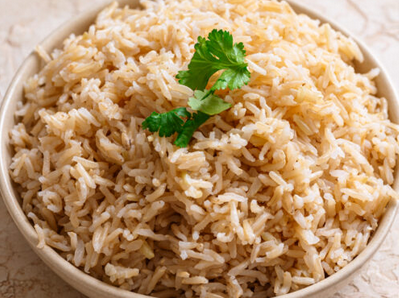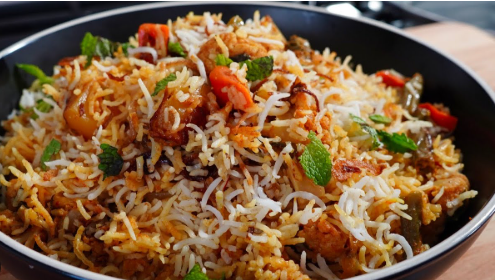To understand how to cook egg fried rice, one must consider the precise control of ingredient states, thermal energy application, and sequential integration of elements for flavor fusion. This guide details the methodological process from rice hydration to protein infusion, optimizing for texture, grain integrity, and flavor development.
Phase 1: Rice Preparation Protocol
- Material Selection:
Use 300g of long-grain basmati rice. If unavailable, any long-grain variant is an acceptable substitute. The integrity of the grain is critical for successful fried rice texture. - Decontamination Process:
Rinse the rice thoroughly with potable water 2–3 times to eliminate surface starch and particulates. - Soaking Stage:
Submerge rice in water for 30 minutes. This process increases internal grain hydration and softens the core, enhancing elongation during thermal exposure. - Boiling Protocol:
- Initiate boiling with 2 teaspoons of salt and 1 teaspoon of neutral oil (sunflower or canola preferred).
- Upon reaching 100°C, introduce soaked rice. Stir once for separation.
- Maintain high flame for 2 minutes, then reduce to medium.
- Monitor for 7–8 minutes until grain length elongates without rupture.
- Drain and Rest Cycle:
- Strain the cooked rice.
- Let rest covered for 5 minutes to retain moisture and steam distribution.
- Gently flip bottom rice to the top to ensure uniform softness.

Phase 2: Protein Denaturation – Egg & Chicken
- Egg Preparation:
Beat 2 eggs. Pour into an oiled, pre-heated steel wok. Create a flat omelet.
Flip once to ensure both surfaces are evenly cooked.
Scramble into micro-chunks mimicking bhurji texture. - Chicken Searing Process:
Use 150g boneless chicken, diced uniformly.
Heat 1 tsp oil on medium flame. Stir-fry continuously for 2–3 minutes until white and firm.
Optional: deep fry or boil chicken prior to integration for varied texture.
Phase 3: Vegetable Thermal Fusion
- Vegetable Selection:
Add diced onion, capsicum (bell pepper), beans, and carrots.
Light boil the carrots and beans before use to retain color and reduce cook time. - High-Heat Stir-Fry:
Maintain high flame. Stir vegetables with chicken for 1–2 minutes.
Add ½ tsp salt and 1 tsp dark soy sauce. Stir for uniform coating and caramelization.
Phase 4: Final Integration – The Fried Rice Assembly
- Mixing the Base:
Introduce half of the cooked rice to the pan.
Add:- 1 tsp white vinegar
- ½ tsp crushed black pepper
- 1 tsp ajinomoto (optional)
- ½ tsp salt
- Green onions (spring onions)
- Chili paste (or substitute with chili sauce)
- Combining & Stirring:
Stir continuously for 1–1.5 minutes over medium flame.
Objective: Uniform spice and sauce distribution, grain coating, and moisture control. - Final Step – Egg Return:
Reintroduce egg scramble. Reserve a portion for topping during plating.
Mix thoroughly to achieve cohesive fusion.

Output Evaluation
- Rice grains must remain separate, glossy, and lightly toasted.
- Protein and vegetable pieces should be evenly distributed.
- Taste profile: Balanced umami, mild spice, and light acidity.
Conclusion
Understanding how to cook egg fried rice at a commercial standard involves methodical preparation, calculated temperature control, and sequential assembly. For optimum results, repeat this structured protocol with exact measurements and consistent ingredient quality.

